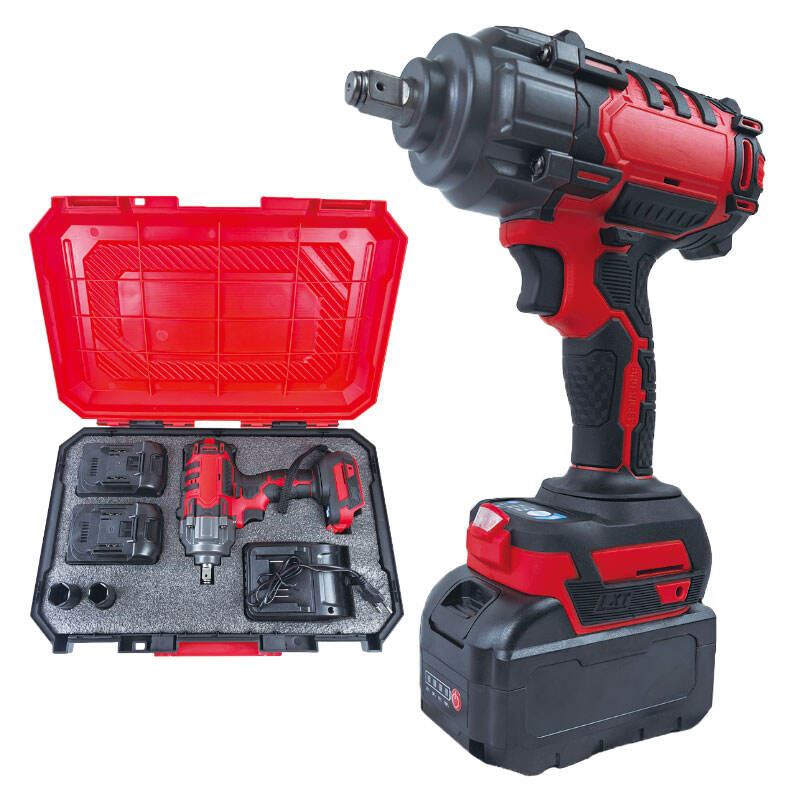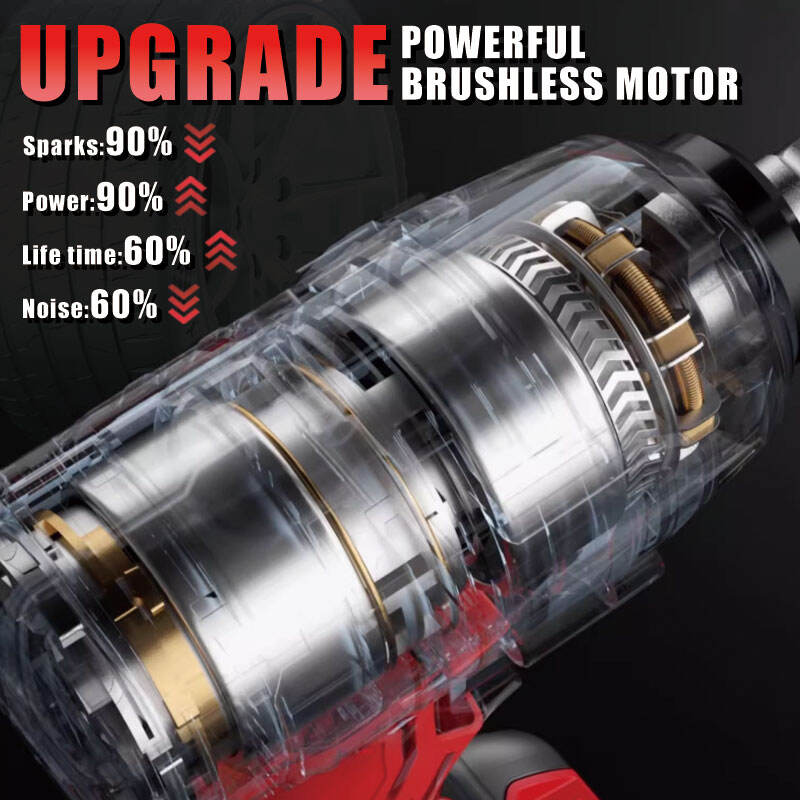Essential Care and Maintenance for Optimal Impact Wrench Performance
An impact wrench serves as a powerful tool in automotive and construction applications, delivering high torque output for stubborn fasteners. Proper maintenance and cleaning routines significantly extend the tool's lifespan while ensuring consistent performance during demanding tasks. Unlike standard wrenches, impact wrenches contain intricate internal mechanisms that require specific care to prevent premature wear or failure. From daily cleaning to periodic lubrication, a structured maintenance program keeps these tools operating at peak efficiency while preventing costly downtime. Understanding the proper techniques for impact wrench care helps professionals and DIY enthusiasts alike protect their investment and maintain workplace safety standards.
Routine Cleaning Procedures
Exterior Cleaning and Debris Removal
After each use, wipe down the impact wrench exterior with a clean, dry cloth to remove oil, grease, and dirt accumulation. For stubborn grime, use a soft brush and mild detergent solution, avoiding harsh chemicals that could damage housing materials. Pay special attention to the air vents (for pneumatic models) or cooling fins (for electric versions), ensuring these critical openings remain unobstructed for proper airflow. The anvil area requires particular attention—remove any metal shavings or debris that could interfere with socket engagement using a small brush or compressed air. Always disconnect the power source before cleaning an impact wrench to prevent accidental activation during maintenance. For cordless models, remove the battery before cleaning and avoid getting moisture in the battery compartment. Regular exterior cleaning not only maintains appearance but also allows for early detection of cracks, leaks, or other potential issues in the tool housing.
Internal Mechanism Cleaning
Pneumatic impact wrenches benefit from periodic internal flushing to remove moisture and oil buildup that accumulates during operation. Use manufacturer-approved air tool cleaner by injecting small amounts into the air inlet while running the tool briefly at low power. This process helps dissolve internal contaminants that could affect performance. For electric impact wrenches, use compressed air to blow out dust from motor vents and switch mechanisms, taking care not to force debris deeper into the tool. The hammer mechanism and anvil assembly require occasional disassembly for thorough cleaning—follow the manufacturer's guidelines for proper disassembly and reassembly procedures. Impact wrenches used in particularly dirty environments may need more frequent internal cleaning to prevent abrasive particles from damaging precision components. Always use appropriate personal protective equipment when cleaning internal mechanisms to guard against flying debris or chemical exposure.

Lubrication and Preventative Maintenance
Proper Lubrication Techniques
Pneumatic impact wrenches demand daily lubrication with specially formulated air tool oil to maintain optimal performance. Add 3-5 drops of oil directly into the air inlet before connecting to the air supply, then run the tool briefly to distribute lubricant throughout the mechanism. Electric impact wrenches typically require less frequent lubrication, but the anvil and hammer mechanism should receive a light coating of grease every few months or as specified in the manual. Use only manufacturer-recommended lubricants for your impact wrench, as improper oils can damage seals or attract dirt. For cordless models, periodically check and lubricate the chuck mechanism with a small amount of light machine oil to ensure smooth operation. Over-lubrication can be as harmful as under-lubrication—excess oil in pneumatic tools leads to messy operation and potential contamination of work surfaces. Establish a lubrication schedule based on usage frequency, with heavy-use industrial applications requiring more frequent attention than occasional DIY tools.
Wear Part Inspection and Replacement
Regularly inspect impact wrench components that experience high stress during operation for signs of wear or damage. The anvil and hammer mechanism should rotate smoothly without excessive play or grinding noises, indicating potential wear in the impact mechanism. Check socket retention springs and detents for proper tension to ensure secure fastener attachment. Examine power cords on electric models for fraying or damage, and inspect air hoses on pneumatic versions for cracks or leaks. Brushes in electric impact wrenches require periodic inspection and replacement when worn beyond manufacturer specifications. Impact wrenches used in professional settings should have all wear parts evaluated monthly, while home use tools may only need quarterly checks. Keep a log of replacement parts and service dates to predict future maintenance needs and maintain a consistent maintenance history for your impact wrench. Proactive replacement of worn components prevents catastrophic failures that could damage the tool or cause injury during operation.
Storage and Handling Best Practices
Proper Storage Conditions
Store impact wrenches in clean, dry environments protected from extreme temperatures and moisture. Hang pneumatic tools with the exhaust port facing downward to prevent oil drainage into sensitive components. Use protective cases or padded tool box compartments to prevent physical damage during transport or storage. Remove batteries from cordless impact wrenches for long-term storage to prevent discharge issues or corrosion. For pneumatic models, install protective caps on air inlets when not in use to keep contaminants out of the internal mechanism. Climate-controlled storage is ideal for preventing condensation buildup that could lead to internal corrosion in impact wrenches. Avoid storing tools near chemicals or solvents that could degrade housing materials or rubber components over time. Proper storage not only extends tool life but also ensures your impact wrench is ready for immediate use when needed, without requiring cleaning or preparation.
Correct Handling During Use
Proper operation techniques significantly reduce stress on impact wrench components and minimize maintenance requirements. Avoid "dry firing" the tool (operating without a load) as this causes unnecessary wear on the hammer mechanism. Use the correct size sockets that fit snugly on the anvil to prevent rounding of the square drive. For pneumatic models, maintain proper air pressure within manufacturer specifications—excessive pressure accelerates wear while insufficient pressure strains the motor. Allow the tool to reach full speed before applying it to fasteners, and avoid using excessive force that could bend or break the anvil. When working in dirty environments, periodically clean the impact wrench during use to prevent abrasive particles from entering sensitive areas. These handling practices complement regular maintenance routines to maximize the service life of your impact wrench while maintaining optimal performance.
Troubleshooting Common Issues
Performance Problem Diagnosis
Recognizing early signs of impact wrench issues allows for timely intervention before serious damage occurs. Reduced torque output often indicates worn hammer mechanism parts or insufficient lubrication in pneumatic models. Excessive vibration may signal unbalanced rotating components or damaged anvil assemblies. Air leaks in pneumatic impact wrenches typically point to worn seals or cracked housings that require immediate attention. Overheating in electric models suggests motor brush issues, inadequate ventilation, or excessive load conditions. Unusual noises during operation often precede mechanical failures and should prompt immediate inspection. Keep manufacturer troubleshooting guides readily available and consult them when your impact wrench exhibits abnormal behavior. Many common performance issues can be resolved with simple maintenance procedures if caught early, preventing more extensive and expensive repairs down the line.
Repair vs. Replacement Considerations
When maintenance can no longer restore an impact wrench to proper working condition, carefully evaluate whether repair or replacement makes better economic sense. Compare the cost of replacement parts and labor against the price of a new tool, considering the age and overall condition of your existing impact wrench. Tools with damaged housings or compromised structural integrity often warrant replacement rather than repair. For minor issues like worn seals or switches, professional repair may extend the tool's life significantly at reasonable cost. Consider upgrading to newer technology if your current impact wrench lacks features that would improve productivity or safety. Maintain a relationship with a qualified tool repair service that can provide honest assessments of your impact wrench's repairability. Document all repairs and associated costs to inform future maintenance or replacement decisions for your impact wrench collection.
FAQ
How often should I lubricate my pneumatic impact wrench?
Daily lubrication is recommended for professional use, while occasional users should lubricate before each use or weekly during regular projects.
Can I use regular motor oil for my impact wrench?
No, only use manufacturer-approved air tool oil as motor oil lacks proper additives and viscosity for impact wrench mechanisms.
What's the best way to clean grease from impact wrench housings?
Use a degreaser specifically formulated for tools and a soft brush, avoiding harsh solvents that could damage plastics or rubber components.


